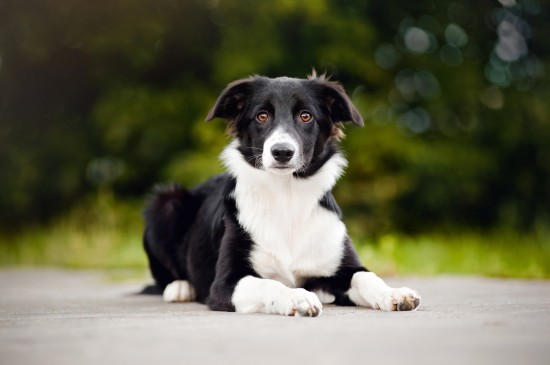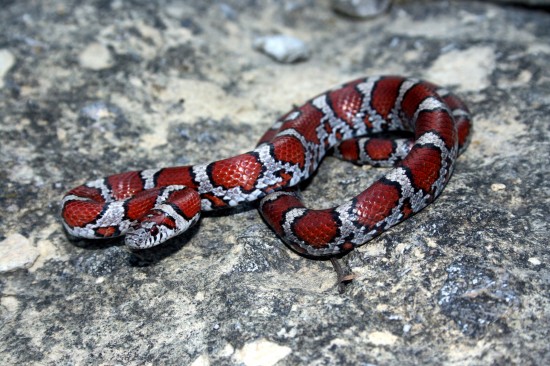DogBarkings.com
AKA Carriage Dog, English Coach Dog, Dalmatiner, Dalmatinac, Firehouse Dog, Plum Pudding Dog, Spotted Coach Dog, Dali, Dal
DESCRIPTION
One of the most instantly recognisable breeds, the Dalmatian is a large, athletic, breed of dog; strong and possessing great endurance, their unique black or liver-spotted coat (the most common colors) is unique in the canine world.?The Dalmatian has elegant lines and a movement that embodies grace and elegance.?They have a similar physic to pointers and although not directly classed as one, it is possible that they are related.?The coat is short and dense with a shiny, almost glossy appearance, with a white background and black, liver, lemon, dark blue, tri-colored, brindled, or sable colored stains distributed throughout.?Patterns may appear denser or more sparse on different dogs.?solid white Dalmatians do exist although they are considered highly undesirable in the show arena.?The head of the Dalmatian is carried in respect to the overall stance of the Dalmatian, in an alert and intelligent fashion.?They have blue, or brown eyes, that are moderate in size and a nose that is colored black, liver, blue or dark gray (which looks black) and corresponds with the color of the dogs spots.?Dalmatian ears have a slight upward curve, narrow to the point and have a soft texture.?All Dalmatian puppies are born with solid white coloring and spots appear as they grow.?Dalmatians with clearly defined and distributed spots are those most sought after.
TEMPERAMENT
The Dalmatian is s dog bred for one purpose - to run.?They are a playful and energetic breed, with outstanding stamina and have bundles of energy, as such they are not a breed that enjoys sitting around all day. Dalmatians are extremely affectionate and thrive on human companionship, if denied this, they will become reclusive and depressed.?Although lovely to children and certainly no threat, their rambunctious and playful nature, coupled with their size, can mean they are a bit too much to handle for smaller children.?They are a happy breed and respond very well to firm, gentle, calm and fair treatment.?They possess great memories and any mal-treatment will not be forgotten.?Lack of exercise or an out-let for their high energy levels may lead to a highly strung dog, whilst a lack of early socialization can lead to timidness.?Some of this breed can be aggressive to strange dogs, especially in male on male confrontations.牋 50% of Dalmatian puppies adopted are not kept past the first year, because many potential owners do not research the breed thoroughly and understand that as puppies, Dalmatians are extremely lively and energetic.?Having said this they tend to calm down after a couple of years and most owners who make it through the active puppy-hood period are extremely happy with these lovely dogs.
HEIGHT: Dogs 50-60cm (22-24 inches), Bitches 50-55cm (20-22 inches)
WEIGHT:20-27kg (45-60lbs)
HEALTH
The Dalmatian is generally a healthy breed, although there are specific issues affecting this breed.?One of these is deafness, which affects 10-12% of Dalmatians and is noticeable in puppies at 6 weeks old.?At this age they should be given the BAER-test for deafness.?Any puppies that are determined to be completely deaf should be spayed, or neutered when the reach the appropriate age.?Deaf dogs are difficult to bring up and will often become aggressive or snappish as a result of fear.?Another problem that affects the Dalmatian breed is urinary stones, this is as a result of higher concentrations of uric acid than is prevalent in other breeds, sometimes causing blockages; lower protein diets are usually recommended by vets to combat this condition.?Some Dalmatians may also display allergic reactions to synthetic fibres in carpets, or upholstery, in the form of skin irritations.?One interesting point about Dalmatians is that unlike many other large breeds of dog, they do not suffer from hip dysplasia or elbow dysplasia and although there are cases, they are extremely rare.?
LIVING CONDITIONS
An abundance of energy means that the Dalmatian is not suited to apartment life, unless, however, the owner is prepared to make several excursions outside every day, to allow the dog to vent its instinctive need to run.?Dalmatians are not only active dogs outside, but also indoors and preferably an average sized back garden, or yard is needed to give them some space to burn some of their inherent energy.?dalmatians should not be left outside in cooler or cold climates.
EXERCISE
Daily long, brisk walks or even runs are needed to keep this dog healthy both physically and mentally.?They have spectacular endurance and walking alone will not suffice this breed磗 exercise requirement.?Off leash running and play are essential in safe areas.?A long bike ride with a Dalmatian running along side is one way an owner can meet this dogs needs without becoming too exhausted themselves.?Under exercised Dalmatians will display numerous behavioral problems and may become destructive.?
LIFE EXPECTANCY: 10-12 years?
LITTER SIZE: Very large at 15+ puppies
GROOMING
Relatively easy to care for Dalmatians require regular brushing with a bristle brush as they are constant - albeit in small amounts - shedders.?Twice annually they have a heavier shedding period and the regularity of brushing should be increased during these times.?Bathe and trim nails only when necessary.
HISTORY
The Dalmatian is an ancient breed of dog, with depictions of similar Dalmationesque dogs running along-side chariots have been found in ancient Egyptian tombs.?The breed has also been mentioned in the letters of a poet named Jurij Dalmatian, which date back to the mid-16th century. The Spanish Chapel of Santa Maria Novella in Florence, Italy, boasts a fresco painted in 1360 which depicts a spotted dog that strongly resembles a modern-day dalmatian.?The breed is believed to have changed very little since these times.?Despite these findings, there is disagreement on where the Dalmatian originated and whilst Dalmatia in Croatia has been sited, many believe the dogs origins lie further back in time and in a different part of the world.?The name 碊almatian?was first used to refer to this breed in the mid 19th Century.?Perhaps it is due to the abundance of Dalmatian references in art, literature and poetry, from around the world, that there exists so many disputes as to where the breed?originated from, with claims coming from Europe, Asia and Africa.?What is clear, is that the Dalmatian has been used for a wide variety of different tasks and jobs throughout the centuries including: dogs of war; hunting dogs, used to hunt birds, trail hounds, retrieve kills, or hunt in packs for boar or stag hunting; watch dog; shepherd dog; ratter - a dog that kills vermin; a circus dog; and perhaps most famously a coach dog.?When introduced to England the Dalmatian was trained to run alongside rich aristocrats coaches, as well as fire brigade carriages and it is from this that it received the name English Coach Dog.?The American Kennel Club recognised the breed in 1888.?One major factor in the breed磗 swings in popularity has been the Walt Disney films 101 Dalmatians and their sequels and whilst not at their peak of popularity now, Dalmatians continue to be a well loved and revered breed around the world.牋牋牋

 Handling And Managing A Herding Dog In A Domestic Environment
Handling And Mana
Handling And Managing A Herding Dog In A Domestic Environment
Handling And Mana
 Provide Your Horse With Equine Supplements To Keep Him Healthy And Happy
Provide Your Horse With Equine Supplements To Keep Him Hea
Provide Your Horse With Equine Supplements To Keep Him Healthy And Happy
Provide Your Horse With Equine Supplements To Keep Him Hea
 Keeping A Pet Milk Snake
Keeping A Pet Mil
Keeping A Pet Milk Snake
Keeping A Pet Mil
 Bathing A Dog With Atopy
Bathing A Dog Wit
Bathing A Dog With Atopy
Bathing A Dog Wit
 Training Cats To Stay Off Counters
Why should we cat lovers care about training cats to st
Training Cats To Stay Off Counters
Why should we cat lovers care about training cats to st